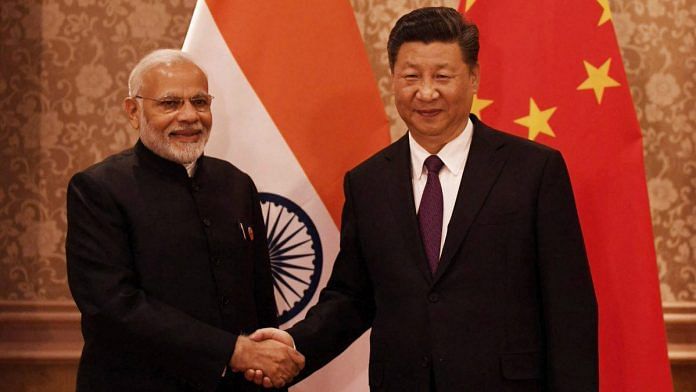Thank you dear subscribers, we are overwhelmed with your response.
Your Turn is a unique section from ThePrint featuring points of view from its subscribers. If you are a subscriber, have a point of view, please send it to us. If not, do subscribe here: https://theprint.in/subscribe/
As the world veers away from rigid Cold War binaries and unipolar dominance, something quietly transformational is taking place across the Global South. From Africa to Latin America, Southeast Asia to the Gulf, a new architecture of cooperation is emerging, one that does not fit the mould of traditional alliances or great-power rivalries. This is the age of mini-blocs: flexible, functional, and increasingly influential.
Unlike NATO-style groupings, these formations, BRICS+, SCO, I2U2, the Global South Summit, and the African Union, are not driven by ideological loyalty or military alignment. They are built around issue-based cooperation and a desire for strategic autonomy. They reflect the growing agency of nations seeking tailored partnerships over binary choices.
From Bipolarity to Multi-Alignment
For decades, global politics swung between bipolarity and unipolarity. First came the Cold War’s East vs. West standoff; then the post-1991 unipolar moment dominated by the United States. Now, however, the world is entering something more fragmented and flexible.
Analysts often forecast a return to U.S.-China bipolarity, but this overlooks a deeper trend: multi-alignment. Countries are no longer choosing sides; they are choosing issues. Foreign policy today is modular, shaped by context rather than camps.
Take BRICS+, for example. Once a five-nation bloc, it now includes six new members like Iran, Egypt, and Ethiopia. It represents over 40% of the world’s population and offers alternatives to Western-dominated financial systems. I2U2 – bringing together India, Israel, the UAE, and the United States – focuses on food security, energy, and technology cooperation across geographies once considered disparate.
India’s 2023 Global South Summit further cemented this trend. With over 100 participating countries, the summit underscored the desire among developing nations to reshape global governance and challenge long-standing Western biases in institutions like the IMF and World Bank.
Why Mini-Blocs Matter
Mini-blocs are not diplomatic afterthoughts they are becoming engines of modern multilateralism.
Unlike older alliances rooted in military deterrence or ideology, these new coalitions target tangible goals: climate resilience, digital infrastructure, energy access, and equitable trade. They allow nations to cooperate on one front while disagreeing on another; an approach far better suited to the 21st-century geopolitical landscape.
Importantly, many of these blocs are laying institutional foundations. BRICS has launched the New Development Bank. The SCO has become a rare space for dialogue among rivals. The African Union’s inclusion in the G20 reflects its rising influence.
Mini-blocs also offer diplomatic hedging. As the U.S.-China rivalry deepens and new wars redraw alliances in Europe and the Middle East, nations in the Global South are using these forums to pursue their interests without being conscripted into someone else’s strategy.
India: Multi-Vector Diplomacy in Action
No country embodies this new diplomatic logic more fully than India.
India has adopted a posture of “multi-vector diplomacy.” It is simultaneously a member of BRICS, Quad, I2U2, SCO, and the G20 engaging allies and adversaries alike with calibrated dexterity.
India imports oil from Russia while strengthening defence ties with the United States. It partners with China in BRICS while countering Beijing in the Indo-Pacific. It deepens economic ties with the Gulf and expands development initiatives in Africa. Throughout, it has maintained a message of strategic autonomy, not neutrality, but issue-driven independence.
India’s presidency of the G20 in 2023 underscored this role. From climate financing to digital inclusion and reforming multilateral banks, India positioned itself as a convener of consensus rather than a combatant in great-power competition.
This ability to engage across blocs, without being trapped by them, makes India a natural convenor and custodian of future multilateral platforms.
The Road Ahead: Depth, Cohesion, Credibility
Yet, this mini-bloc moment comes with challenges.
First, institutional depth. Without legal frameworks, pooled resources, and actionable agendas, these platforms risk becoming symbolic rather than substantive.
Second, internal tensions. Rivalries like India-China within BRICS or Israel-UAE in I2U2 could hamper decision-making and slow progress.
Third, external scepticism. Traditional powers may resist ceding influence or may attempt to dilute these platforms through co-option or containment.
Conclusion: A Multipolar World in Miniature
Mini-blocs represent a world that is no longer waiting for superpowers to set the rules. They are crafting new frameworks, incremental, imperfect, but necessary, for a more inclusive global order.
In a time of polycrisis – climate breakdown, financial fragmentation, technological bifurcation – these coalitions offer agility and pluralism. They are better equipped to serve diverse development priorities, especially for mid-sized powers and emerging economies.
India, with its diplomatic range and economic weight, is poised not just to benefit from this trend but to shape it. Its task will be to remain nimble, build trust, and walk the fine line between cooperation and competition.
The age of “with us or against us” is over. The age of “with us – and also with others” has begun.
These pieces are being published as they have been received – they have not been edited/fact-checked by ThePrint.


